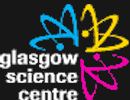Science trail - solar cells
You are going to become science detectives and investigate what the latest science news story is all about.
![]()
You can find the story here. Have a quick glance now, just to get the flavour. You can spend more time on it back in class.
Right now you're going to follow a trail to hunt for clues to the real science behind the story.
You will work in teams to search for exhibits that have science secrets to tell you.
Try not to get lost, but don't worry if you do. Glasgow Science Centre is a big place, but friendly.
If you're not sure about something, just ask anyone in a Science Centre T-shirt. They will point you in the right direction.
Here's how it works
Two teams take part in the science trail - a control team at the computer and a field team that hunts for clues. The teams work together to solve a puzzle.
When the field team finds a clue it change places with the control team. So everyone gets several chances to be controllers at the computer and field operatives around the Science Centre.
The teams
The field team has four members. The control team can have two, three or four members.
Each member of the field team has a particular job, besides talking things over with the rest of the team and finding clues. These jobs are:
the navigator
the communicator
the investigators (two).
You may swap jobs with another member of the same team, after each leg, if you both agree.
On the science trail
At the start, the computer gives you the name of an exhibit at the Science Centre and its photograph. It also gives you two questions to answer at that exhibit.
To do this you will play with the exhibit, try things out, see what it can tell you. You will take turns and chat among yourselves. You will aim to get answers that all of you can accept.
The first question will be about what you find when you try the exhibit. The second question will usually be in the form of a word missing from a sentence.
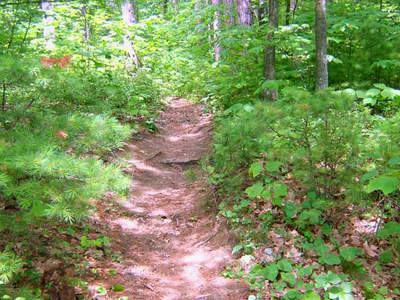
Before setting out on the trail, the investigators write down one question each.
The field team then heads off, led by the navigator, to find the exhibit. They try it out, follow any instructions, see what it's all about.
They take their time. They work out their answer to the first question.
The communicator then uses a mobile phone to text the answer - a few words, often just one - back to the control team.
The field team has a discussion and texts the answer to the second question to the control team.
The control team tries both answers on the computer. If an answer is wrong the control team asks the field team to try again.
Helpful hints are available from the computer, if needed.
Next leg
If the computer accepts the answers it produces the name of the next exhibit and its photograph.
The field team now heads back to become the control team for the next leg of the investigation.
The control team becomes the field team and goes off to search for the next exhibit - after waiting for the field team, in case someone else takes the computer.
Before starting, please take a look at the big question raised by the news story.
Good detecting
News: New window on solar cells
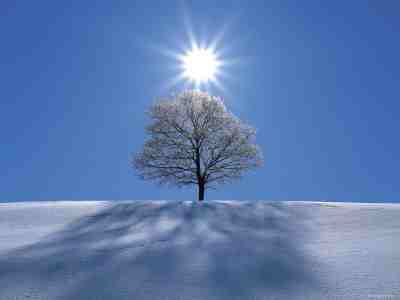
This is a sunny story. It's all about making electricity from sunlight.
Energy from sunlight is clean and green. It doesn't cause pollution. It doesn't put greenhouse gases into the atmosphere.
The sun won't run out of fuel to make sunlight for another 5 thousand million years – give or take a few million. So energy from sunlight - solar energy - is renewable.
But there is a catch
Solar cells are expensive to make and they don't work too well.
Scientists use a number called efficiency to measure how well a machine works. Efficiency is the amount of energy that comes out divided by the amount that goes in.
So if a solar cell has 50% efficiency, half the energy that goes in as sunlight comes out as electricity.
The very best solar cells have an efficiency of 40%. And they cost a fortune. Solar cells at a reasonable price have less than 20% efficiency. That means four-fifths of the sunlight that shines on them is wasted.
In countries like Scotland, where sunlight can be scarce, low efficiency in a solar cell means less electricity than you need.
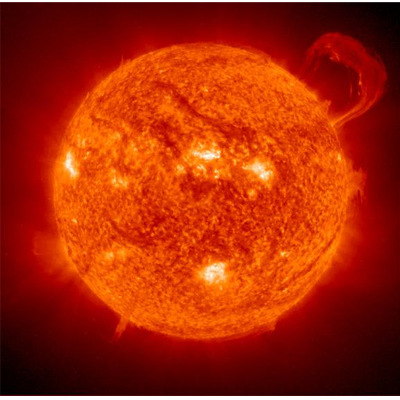
The big question
Why can't solar cells turn all the sunlight that hits them into electricity?
Or at least something closer than a measly one-fifth.
Are you ready to go looking for clues?
Here's the name of the first exhibit you should try to find, and a photograph to show you what it looks like:
Eye spy
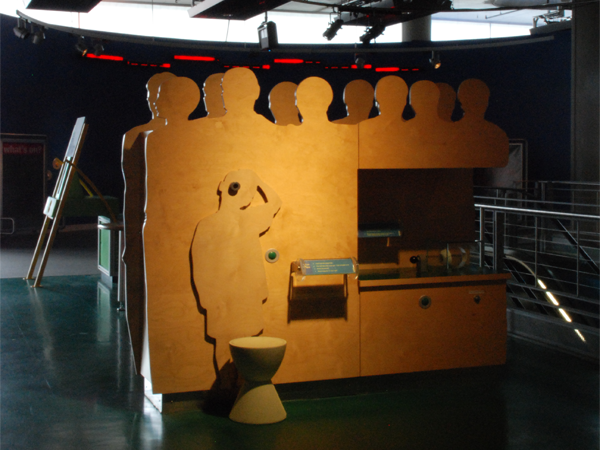
Once you've found the exhibit have a play with it. What happens to your eye when the light is bright?
Everybody in the team should have a go. Then try to answer the questions as a team.
Here are the questions for this exhibit:
1. Do everybody's eyes do the same thing when they look through the hole?
2. Complete this sentence: The part of my eye that lets light in gets smaller when _ _ _ _ _ _ light shines on it.
(Note: science detectives only get to see the instructions for the next exhibit as each correct word is inserted into the computer. For simplicity of presentation, this mechanism has not been implemented on this page.)
Rainbows and raindrops
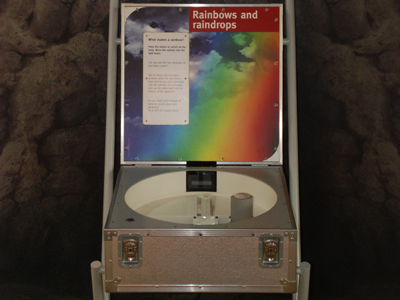
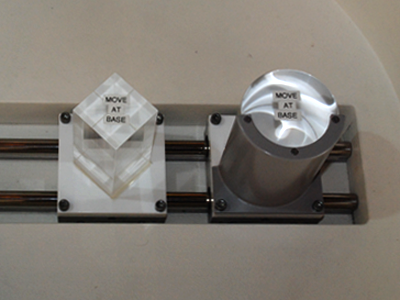
The first exhibit showed that light has brightness.
But there is something else about light we need to know. Let's see what the rainbow tells us.
Here are the questions for this exhibit.
Which of the clear shapes gives you a little rainbow - the round one or the square one?
Complete the following sentence. White light is made of many different _ _ _ _ _ _ _ .
Pipes of light and Giant optical fibre
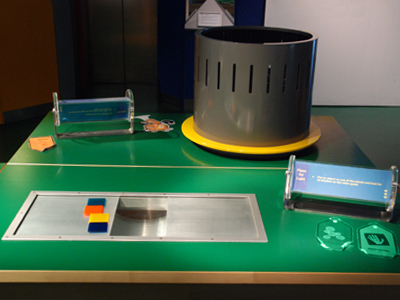

These two exhibits are close together and demonstrate the same science. Have a play with them and talk to your colleagues.
Here are the questions
Do you think that 'pipes of light' is a good name?
Now complete this sentence. Light that travels inside glass or plastic can't e _ _ _ _ _ easily, because it bounces (scientists say reflects) off the inside walls.
Hot spots
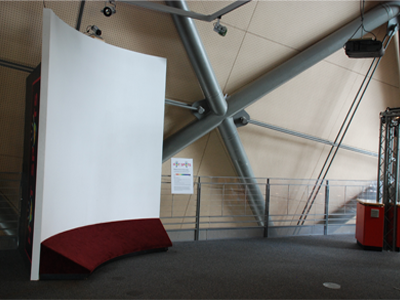
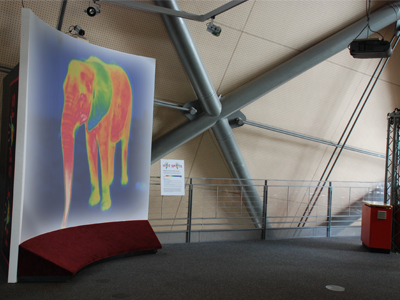
This is the final exhibit of the solar cells science trail. It is also maybe the most fun - even if you can't find a handy elephant to try it on.
Here are your questions:
Who has the hottest hands in your team?
Complete this sentence: The images on the screen are made by a computer connected to the _ _ _ _ _ _ _ _ camera on top of it.
Since this is the last exhibit on this science trail, the field team should now head back to the computer to tackle the final part of the assignment together with the control team.
Back at the computer
All the colours of the rainbow - and lots more besides
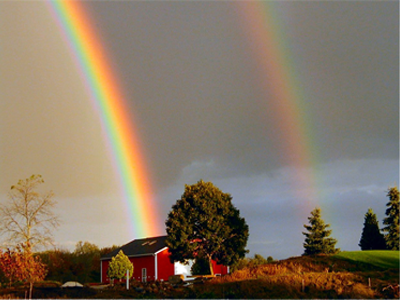
Remember all those colours in white light you saw at Rainbows and Raindrops?
Well the Hot Spots exhibit shows there are other "colours" - scientists say wavelengths - that humans can't see. Infra-red is the name for a group of these wavelengths.
Only very hot things give off light. But everything gives off infra-red - including our bodies.
Hot things give off more infra-red. They are brighter in infra-red.
The sun is really hot, so sunlight has lots of infra-red in it.
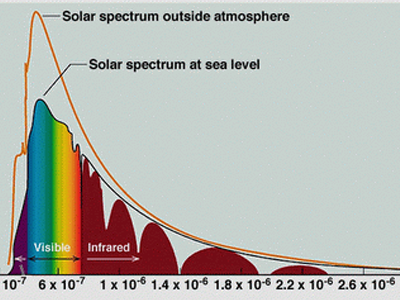
Cool things give off less infra-red. They are less bright in infra-red.
The Hot Spots camera measures how much infra-red is given off by parts of your body. The computer then creates a picture with made-up colours.
It shows things that are bright in infra-red as red and white, which we think of as hot. It shows things that are not-so-bright in infra-red as cool blues and greens.
Now complete this sentence to get the final clue to the solar cell puzzle:
As well as all the colours we can see, sunlight also contains "colours" we can't see. Scientists call them _ _ _ _ _ _ _ _ _ _ _.
Solving the Puzzle
You have now finished this part of the solar cell science trail. You have gathered a number of important clues to what the latest news story is about.
Here are all of them: bright, colours, escape, infra-red, wavelengths.
How many did you get?
If you got them all, well done. You are excellent science detectives.
Back in class, please take a look at Solving the puzzle to see how these clues fit together.
Do you remember what the puzzle was? Why can't solar cells turn all the sunlight that hits them into electricity?
Have a look too, when you've time, at the Solar cell news story to see what scientists have been doing to make solar cells work better - to improve their efficiency.
Try to spot all the places where your science-trail clues appear.
End of the trail?
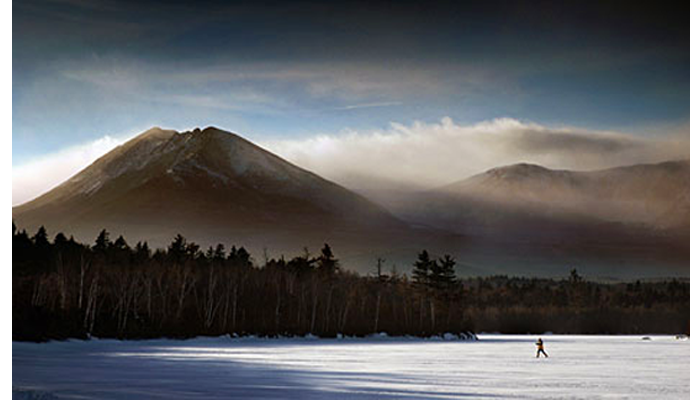
So where do you go from here? Does the science trail end at Glasgow Science Centre?
It doesn't have to.
Some of you will become scientists one day. Perhaps you will devise a super solar cell that changes much more sunlight into electricity.
So what exactly is a scientist?
One answer is that it's someone who has been to university to study physics, chemistry, biology or astronomy, and now does science for a living.
A simpler answer is this:
A scientist is someone who asks questions and keeps on looking for answers.
Do you remember this?
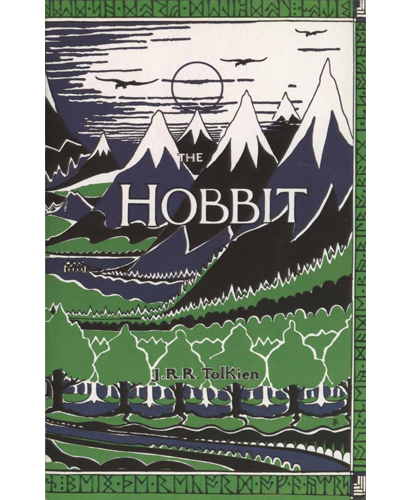
Roads go ever ever on,
Over rock and under tree,
By caves where never sun has shone,
By streams that never find the sea;
Over snow by winter sown,
And through the merry flowers of June,
Over grass and over stone,
And under mountains of the moon.


